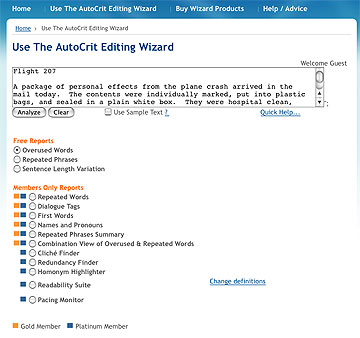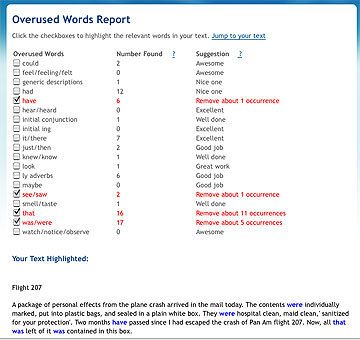
Whoa, that convo would never take place!
Ever read a novel and have that thought come to mind while perusing the dialogue? That situation happened to me this week. Twice, in fact. One incident involved a YA novel. As an educator, I hear enough teen talk to know what's real and what's phony as a $3 bill. The other time I was critiquing a short story. Everything flowed in the piece, except the dialogue. Nothing like stealing that "feel good" feeling from a great piece of literature. (Insert frown here.)
Writers need to keep dialogue real; otherwise, readers will tune out. What are the best ways to pump up the reality volume of what your characters are saying? These tips will help you fine tune your characters' messages:
- Listen and Learn Unless you isolate yourself from the outside world, conversations that you can learn from take place all the time. Call if eavesdropping, but if you just sit and listen to people talk, you'll learn to pick up speech patterns, key words, phrasing, and rhythm - all which will help you write a realistic scene. For example, I attended a comedy show last night and paid attention to the comedian riff with an audience member. The comedian used timing to his advantage, creating this natural conversation with the guy in the front row. As the dialogue continued, even the audience member seemed to pick up on the established rhythm the comedian employed. It was a perfect example of listening and learning how individuals talk and respond to each other. One of the best methods for improving dialogue technique may require popcorn. Watch a movie and discover how each character treats the dialogue. It's more than words. Dialogue also means you're creating a mood, setting up a reaction, and propelling a character into new situations.
- Precision Trumps Surplus Once you've mastered listening, put your skills to the test. Dialogue shouldn't provide full disclosure. Instead, writers need to discern which information should be offered through dialogue. Info overload makes dialogue sound stilted. What's the best advice? Precision. Precision. Precision. A character's dialogue should make a point. Otherwise, it sounds fake.
- The Rule of Three Repetition can be a writer's best tool to drive home a point. When writing stand up comedy, you give two examples and then bam! hit the audience with a twist the third time. It's the same "rule of three" idea with fiction. Writers employ a key word or phrase three times in a row to emphasize a point. Moderation is the key with the rule of three. Too much of a good thing makes dialogue sound phony.
- Speak Up Once you've completed a scene, read it aloud. Do the words match the intended tone and message? Or does the conversation sound bogus? Sometimes I'll record a scene as a .wav or MP3 file, play it back, and hear where changes are needed. If you're part of a critique group, read snippets of dialogue to group members and use their input to decide whether or not the words flow or if the conversation needs to be rewritten.
Perhaps Alfred Hitchcock summed up realistic dialogue when he said, "Dialogue should simply be a sound among other sounds, just something that comes out of the mouths of people whose eyes tell the story in visual term
I stumbled across the AutoCrit site today and found it to be a helpful tool for editing your flash fiction stories. The free version allows you to paste a story of under 800 words into a text box, where you have the option of selecting reports on three categories: Overused Words, Repeated Phrases, and Sentence Length Variations. These categories are crucial to analyze when crafting a flash piece.
So, I dug out an old story and pasted it into text box here: http://www.autocrit.com/autocrit/wizardformpage.php

I clicked the "Overused Words" button and clicked "Analyze." The next screen shows a list of typically overused words with red check marks pertaining to your story, as well as suggestions for how many words to remove.
I definitely used "that" too many times--which is a common mistake *that* (delete!) I see a lot in flash fiction, and a bad habit of mine. In most cases, you can safely remove "that"--it doesn't add anything to the sentence--and will help trim your word count.
The AutoCrit said my use of "ly adverbs" was "Excellent," as was my use of "could," "it/there," and "maybe." Other interesting areas are the use of generic descriptions (I got a "Nice one" response), the use of feel/feeling/felt (I got a "Yay"), initial conjunction ("Well done"), and initial ing ("Nice work"). The comments are encouraging and are all wonderful helpers to fix passive voice problems.

Beneath the checklist is your highlighted text with culprits displayed in blue. Drag your cursor over the text and copy-paste it into your MS Word program--you'll notice the blue text copies as well. At least it did with mine.
You can only select one option at a time but you can hit the back button after you've read the results and your text will still be there. Then you can select one of the other options, such as "Repeated Phrases" and "Sentence Length."
Repeated Phrases: This page shows all phrases which repeat within 100 words in highlighted blue text. If you are using a repeated phrase for emphasis it can be very powerful, but remember it should contribute something to the story, so use them carefully. When in doubt, leave it out--especially in flash. It will only eat your word count.
Sentence Length: This page gives you a list of the beginning of each sentence and how many words it contains. It's important to vary your sentence length because similar-length sentences can be dull to read.
The AutoCrit site offers further services to those that subscribe for a fee. I haven't tried their paid services, so I can't offer a review. Their "Members Only" reports include other editing tools such as: Dialogue Tags, First Words, Names and Pronouns, Cliche Finder, Redundancy Finder, Homonym Highlighter, Readability Suite, and Pacing Monitor.
But I found their free online tool to be quite helpful in trimming unnecessary words and a good reminder to really check your story for any issues you might have missed. So if you're preparing to enter the WOW! Women On Writing Flash Fiction Cont






Thank you for the tips...I tend to read my dialogue out loud. I need to "hear" the conversation taking place to make sure it sounds like a realistic discussion...and it helps a lot. Thanks again.